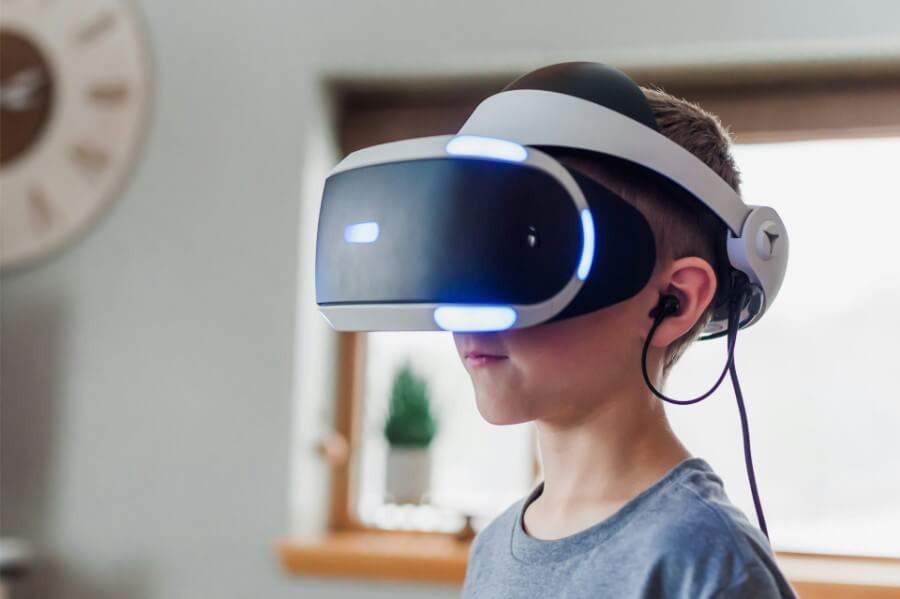
In the realm of digital design, two fields have been on a steady path towards convergence: graphic design and virtual reality. This intersection is not merely a collision of technologies but a fusion that promises to redefine our perception of digital experiences. The evolution of graphic design into the three-dimensional, immersive worlds of VR offers unparalleled opportunities for creativity, interaction, and storytelling. This article delves into the transformative impact of VR on graphic design, the challenges designers face in these new environments, and the boundless possibilities that this synergy holds for the future.
The Evolution of Graphic Design in VR
Graphic design, traditionally concerned with creating visual content for print and digital media, is experiencing a paradigm shift with the advent of VR technology. This shift is not just about transitioning from flat surfaces to 3D spaces but involves rethinking design principles, tools, and applications to exploit the full potential of immersive environments.
Rethinking Design Principles
In VR, the principles of design—balance, contrast, emphasis, movement, proportion, hierarchy, and repetition—take on new dimensions. Designers must consider the spatial dynamics of their creations, how users navigate and interact with elements in a 3D space, and how these elements coexist within an immersive narrative. This requires a blend of traditional design skills and a deep understanding of user experience (UX) design tailored to VR.
Tools of the Trade
The tools and software for VR design are evolving rapidly. Programs like Adobe Aero, Unity, and Unreal Engine are at the forefront, offering designers the ability to create complex, interactive environments. These tools require designers to acquire new skills, such as 3D modeling, animation, and coding, expanding the graphic designer’s toolkit far beyond traditional 2D editing software.
Application Beyond Conventional Boundaries
VR extends the application of graphic design to new horizons. Beyond marketing and entertainment, it’s being used for educational purposes, virtual exhibitions, and therapeutic experiences, offering a new medium for designers to explore and impact the world. One notable application is vr for museums, which enhances visitor engagement by offering immersive virtual tours and interactive exhibits, transforming how cultural content is experienced.
Challenges at the Crossroads of Design and VR
The fusion of graphic design and VR is not without its challenges. These range from technical limitations to the need for new design paradigms and considerations of accessibility and user comfort.
Technical Limitations and Learning Curve
The hardware and software requirements for creating and experiencing VR can be a barrier. High-quality VR experiences require powerful computers and specialized equipment, limiting accessibility for designers and users alike. Additionally, the steep learning curve associated with mastering 3D design tools and programming can be daunting for traditional graphic designers.
Designing for User Comfort and Accessibility
VR presents unique challenges in ensuring user comfort and preventing issues like motion sickness. Designers must consider the ergonomics of virtual spaces, including navigation methods, interaction design, and the pacing of experiences. Accessibility also becomes a critical concern, as designers must ensure that VR experiences are inclusive and can be enjoyed by users with varying abilities.
The Future of Graphic Design in VR
As technology advances, the barriers to entry are lowering, and more designers are venturing into the realm of VR. This burgeoning field holds tremendous potential for innovation in storytelling, branding, and user engagement.
Immersive Storytelling and Brand Experiences
VR offers a new canvas for storytelling, allowing designers to create immersive narratives that engage users in unprecedented ways. Brands can leverage VR to offer unique experiences that foster deeper emotional connections with their audience, from virtual tours to interactive product demos.
Enhanced User Engagement
The interactive nature of VR can transform user engagement, offering personalized experiences that are more engaging and memorable than traditional media. This can be particularly impactful in education, training, and simulation, where VR can provide hands-on learning experiences that are both effective and entertaining.
A New Frontier for Creativity
The intersection of graphic design and VR is a testament to the limitless possibilities of digital technology. As designers explore this new frontier, they are not only shaping the future of the field but also expanding the very definition of what it means to be a graphic designer.
Conclusion
The synergy between graphic design and virtual reality is more than just the sum of its parts. It represents a new era of digital creativity, where designers are not just creating for the world but are inviting users to step into the worlds they create. The challenges are significant, but the potential for innovation, engagement, and storytelling is boundless. As we stand on the brink of this new frontier, one thing is clear: the future of graphic design is not just about what we see on the screen; it’s about the experiences we can step into and the realities we can imagine and bring to life.